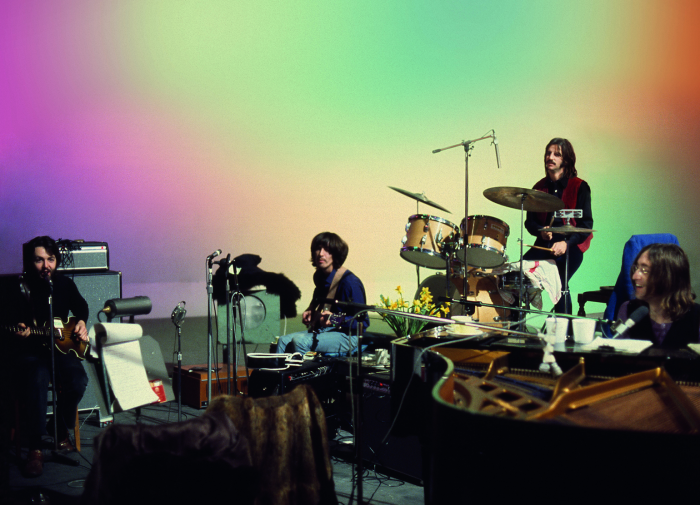With the release of Turning Red, its 60th animated feature, the family-friendly entertainment juggernaut drove its mouse-eared prow straight into the culture wars. For over a decade, Disney had been grounding its animated features in traditions far from its homogenous American origins with sometimes messy results. Though well-intentioned, these steps in a more inclusive direction meant little more than a red-haired princess instead of a blonde one. But as its efforts toward representation grew ever more ambitious, Disney wound up drawing criticism from nearly every corner.
A proposed live-action Snow White received a lambasting from actor Peter Dinklage for its pixie-fication of dwarfish bodies. Raya And the Last Dragon, a pointedly diverse film, provoked sharp criticism for grafting a vast array of Southeast Asian cultures (Indonesian, Malaysian, Cambodian, Singaporean, Vietnamese, Lao, Thai) onto a sort of princess-journey boilerplate.
Even supporters of Disney’s commitment to representation felt that, while laudable, the commitment would inevitably exact a cost to its creative product. And that’s odd, because it’s the very diversity of Disney’s most recent films that likely made those films superior. Encanto and Turning Red both prove the point.
Based in two richly-specific story worlds—magical-realist Colombia for Encanto, and 1990s Toronto for Turning Red—each film provided a sumptuous visual feast like Raya, but triumphed because of an evolved understanding of the word “representation.” These two films represented all the kinks, quirks, and hiccups of a specific people, in a specific culture, at a particular time.
Encanto’s Believable Magical Realism
In 2016, Encanto directors Jared Bush and Byron Howard began with a story of a large family that’s magically empowered except for one ungifted daughter. But it was the Colombian filmmakers Natalie Osma and Juan Rendon that suggested setting the story in Colombia, a kind of Latin American crossroads that provided the story with fertile ground.
The yellow butterflies that carry such emotive weight in the film—images of longing, or fragile hope — flitted from the pages of Gabriel Garcia Marquez’s masterpiece, A Hundred Years of Solitude. The boisterous post-colonial pueblo outside the Madrigal’s mansion draws its inspiration from Barichara and Salento, two real-life Colombian towns. The technicolor river, a site of fateful events in the family’s life, was influenced by an actual river named Caño Cristales, which in different seasons can appear red, blue, green, or yellow. The foundational tragedy that occurs there and claims the patriarch of the Madrigals reflects Colombia’s armed militia conflicts of the past century, which Colombians tend to call “The Violence.”
Countless other elements in the Encanto mosaic—the fast salsa caleña dancing style, the diversity of skin tones, the sexy, gender-fluid strongwoman Luisa—bring a truly fleshed-out realism to this magical-realist vision of Colombia.
Turning Red Finds the Universal in the Particular
Like Encanto, Turning Red also locates itself at a cultural crossroads. In this case, it’s one that creator Domee Shi embodied from childhood. A Canadian native, Shi was raised in ’90s Toronto by two loving, boundaryless Chinese immigrants, who presumably navigated her puberty awkwardly, at best. Starting with the primal drama of a daughter’s first menstruation, Shi spun a kind of Boy Band-era fairytale—a period film, if you will—marshaling all the mighty, dream-making force of Pixar.
The central device: at the cusp of adolescence, 13-year-old Mei Lee finds herself turning into a big, fuzzy, unignorable (but adorable) red panda at moments of either stress or hormonal surge. Employing the tactic of anthropomorphized emotions that Pixar minted with Inside Out, Shi renders the explosive humiliations of puberty as a spectacle that’s both socially awkward and shame-free. Anchored in the physical specifics of self-regulation, Mei’s efforts to tame her inner panda involve deep breaths and self-soothing hair-brushing—rather than, say, flinging herself onto her bed for a Disney princess sob.
But the film’s rendition of its world combines hyper-realism of Pixar’s CGI wizards with physical exaggerations of anime like Sailor Moon to render the outsize emotional states of early adolescence. New technology that gives a frame-by-frame assessment of background characters enabled an incredibly faithful panorama of a racially- and socially-diverse Toronto street corner, seen in the pastel hues of recalled ’90s tweendom. The fully realized sound, music and dance moves of the film’s invented ’90s boy band 4*Town, both crush objects and common cause for Mei and her friends, physicalizes the fun, trashy, ’90s outside world that pulls Mei from the loving straitjacket of her conservative Chinese mom.
Other contemporary totems—Tamagotchi pets, certain backpack styles—engorge this totally fabricated world with unruly life. Ending credits show the massive Pixar infrastructure that helped realize a Toronto native’s coming-of-age tale. While some might find this cause for resentment, others might cite an observation from James Joyce: “In the particular is contained the universal.”
If the successes of Encanto and Turning Red are any indication, inclusiveness is a friend, not foe, of universal appeal. Greater representation of soul, honesty, and empathy may make for an even more magic kingdom.


